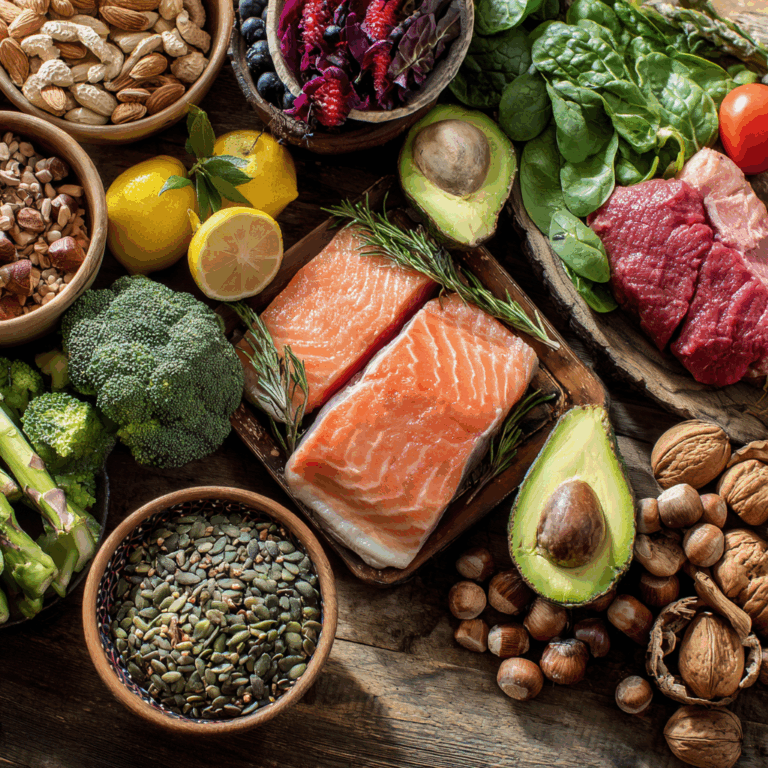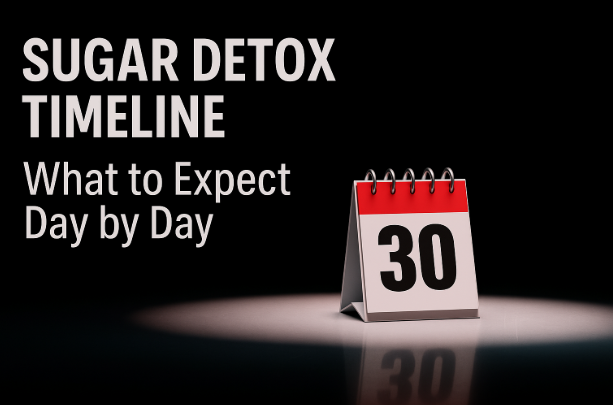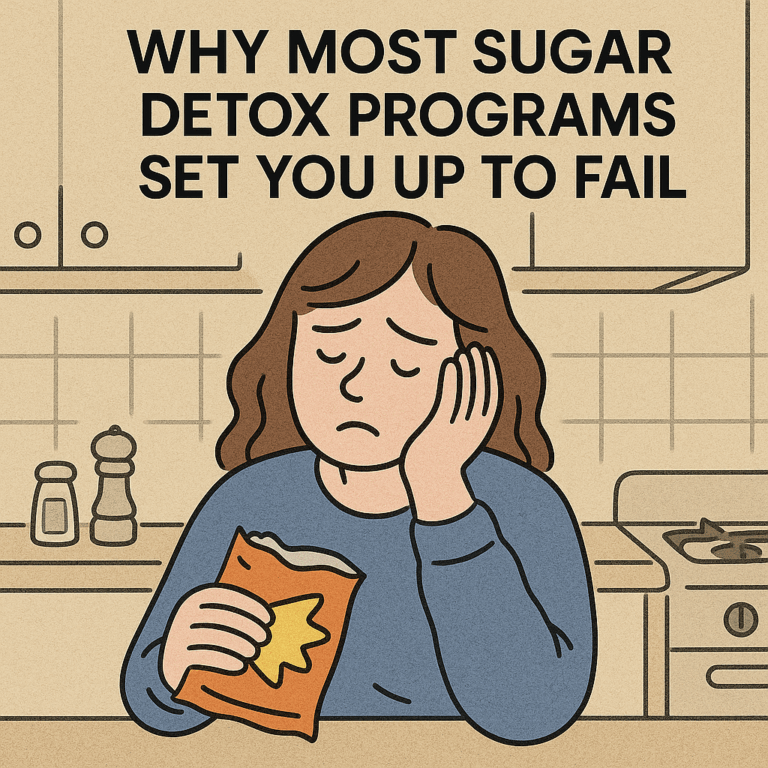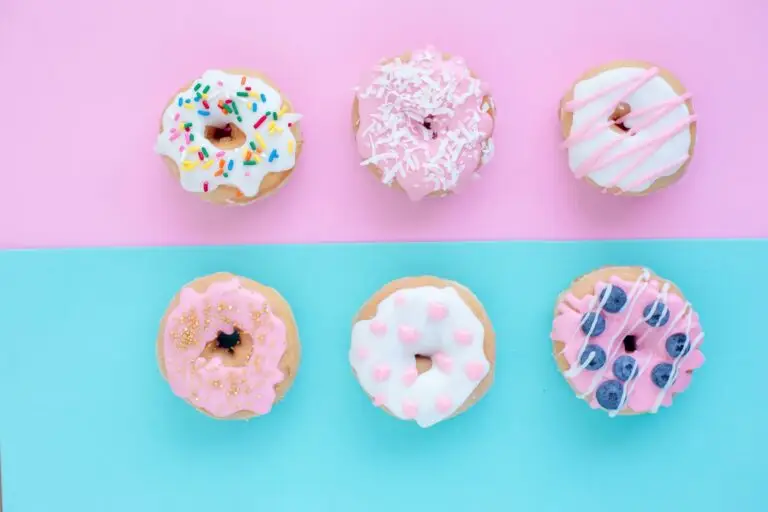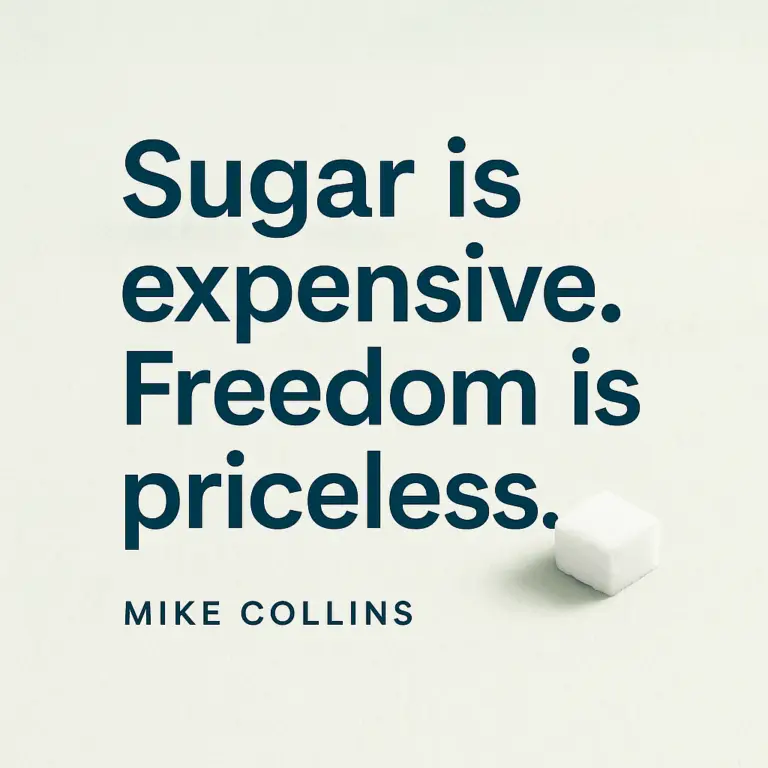By Mike, The SugarFreeMan
Founder of SugarDetox.com and the 30-Day Sugar Freedom Challenge
Featuring: Mike Collins, The SugarFreeMan with Dr. Cammy (Dr. Cammy Goes Keto)
“The real solution, the behavioral change, happens after abstinence.” – Mike Collins.
Watch the Conversation
If you prefer to read (or you want the key points before you listen), this article distills the whole conversation into a practical, start‑today guide.
This article was review by Dr. Camela McGrath, MD, FACOG. Find more about her here

TL;DR
- We have spent a century proving what sugar does to the body (fatty liver, type 2 diabetes, weight gain, inflammation). The missing piece is how to create behavioral change that lasts.
- The first 30 days require simple, stubborn abstinence from sugar, flour, and ideally caffeine. Even if it feels impossible, do not use them.
- Around day 10 to 15, expect an emotional surge. You may feel weepy, angry, or edgy. That is normal. Your old coping mechanism is gone. Do not white‑knuckle alone. Community is the bridge.
- Long-term success comes from post‑abstinence rewiring. Close the old “I feel X then I eat sugar” pathway and build new self‑soothing habits.
- Roughly one-third of people are true sugar addicts. Moderation strategies fail them. For these people, abstinence plus support is the only path.
Ready to start? Join the 30‑Day Sugar Freedom Challenge and plug into a community that gets it.
The Problem We Are Actually Solving
A hundred years of research have mapped sugar’s damage to the body. Yet millions still cannot execute the doctor’s order to “cut ultra‑processed carbs.” Why? Because the problem is behavioral, not informational.
When you remove sugar, flour, and caffeine, you remove an unconscious coping system you have rehearsed since childhood, rewarding your brain with dopamine and serotonin every time life gets noisy. The moment you stop, the nervous system pushes back.
Translation: You are not weak. Your brain is simply trained.
The First 30 Days: What to Expect (and How to Win)
Phase 1: Days 1 to 7 – Clear the deck
- Remove trigger foods from your environment.
- Keep meals simple: protein, fiber, and healthy fats: hydrate and sleep.
- If you continue to consume caffeine, set a fixed cutoff time. Taper early if possible.
- Mantra: No sugar, no flour, and ideally no caffeine.

Phase 2: Days 8 to 16 – The Emotional Weather
- Expect “emotional flu.” You may feel raw, weepy, irritated, or anxious.
- This is the point where most people relapse because the old soothing loop is gone.
- Do instead: walk 10 minutes, text a teammate, take a bath, or journal “I feel ___ when ___.” Then get to bed.
Phase 3: Days 17 to 30 – Repatterning
- Notice the pink cloud fading and steadier energy arriving.
- Keep stacking replacement habits:
- Micro‑walks after stress
- Breathwork, sauna, or yoga
- Call a friend before you pass the vending machine.
- Use the HALT check (Hungry, Angry, Lonely, Tired)
- Micro‑walks after stress
- Stay close to the tribe. Coach check‑ins are gold here.
Critical guideline: Do not start extended fasting in your first month. It is too much of a load for most beginners. If you already use a gentle time‑restricted window, keep it, but save 24 to 36-hour fasts for after about 60 days.
Why Community Is Non-Negotiable

In a world where most people normalize sugar, you are the odd one out the moment you try abstinence. Even family and friends will hand you a donut and say, “One won’t hurt.” They are not cruel; they are trying to keep you in their tribe.
So join a new tribe on purpose. A good community gives you:
- Normalization of the emotional surge. You are not crazy, you are healing.
- Pattern‑break coaching in real time. “Walk with me while you pass that vending machine.”
- Identity shift. “I am a person who does not use sugar to self‑soothe.”
This is why meetings, support groups, and coaching beat willpower. It is the same reason Weight Watchers chapters with strong community leaders historically outperformed the rest. Belonging changes behavior.
The Brain Science (Plain English)
- Ultra‑processed sugar hijacks reward chemicals like dopamine, serotonin, norepinephrine, and GABA.
- With repetition, receptors downregulate and the brain builds a high-speed neural highway: Feel bad → eat sugar → temporary relief.
- Over time, you need more sugar for the same effect, while the body accumulates damage such as inflammation, fatty liver, and insulin resistance.
Recovery means closing the old highway and building new routes: Feel bad → take a walk, call a friend, sauna, or breathwork → actual relief.
Are You a Moderation Person or an Abstinence Person?
Mike has seen more than 57,000 detoxes since 2009. His rule of thumb:
- About one-third can moderate without spiraling.
- About one-third are heavy but not thoroughly addicted. Mindful reduction helps.
- About one-third are true addicts. One cookie lights the craving fuse. For these people, moderation is misery: abstinence plus support wins.
If you keep “trying harder” at moderation and keep failing, that is data. You are likely in the abstinence camp.
The 90 Day Promise
Mike’s life mission is simple: get you to 90 days of 100 percent abstinence so you can discover what is on the other side. Energy, mood, skin, weight, sleep, and mental clarity. Most who reach 90 days do not go back. Slips happen, and the tribe gets you back on track.
Curious enough to try? Start with 30 days inside a community, then extend to 60 to 90 days with coaching support.
Quick Start Checklist
- Clear the house and say goodbye to trigger foods
- Plan simple meals and shop once
- Tell one supportive person your start date.
- Join the community and set daily check‑ins.
- List 10 replacement soothers (walk, bath, call, journal, breathwork, stretch, sauna, tea ritual, music, sunlight)
- Sleep 7 to 9 hours and hydrate
- Avoid starting long fasts until after Day 60
Your Next Three Steps
- Join the 30‑Day Sugar Freedom Challenge. Get daily guidance, live support, and a tribe that gets it.
- Book a Coach Check‑In. Two short sessions in your first two weeks often prevent the Day 10 to 15 relapse.
- Share the Episode. If someone you love is stuck in “try harder” mode, send them this page.
FAQ
Q: I am on Day 12 and feel furious or weepy. Am I broken?
A: You are right on schedule. Your brain is adjusting without its old sugar lever. Call someone, move your body, and get to bed. Tomorrow counts.
Q: My spouse does not support this. Now what?
A: Do not debate food theology. Protect your environment, and lean on the community for the dopamine you used to get from sugar.
Q: Can I keep coffee?
A: Many succeed faster reducing or removing caffeine in the first month. If you keep it, set a strict daily cutoff and avoid sugary add‑ins.
Q: Do I need fancy supplements?
A: Not to begin. Whole food, electrolytes, sleep, sunlight, and support carry most people across the 30-day bridge.

